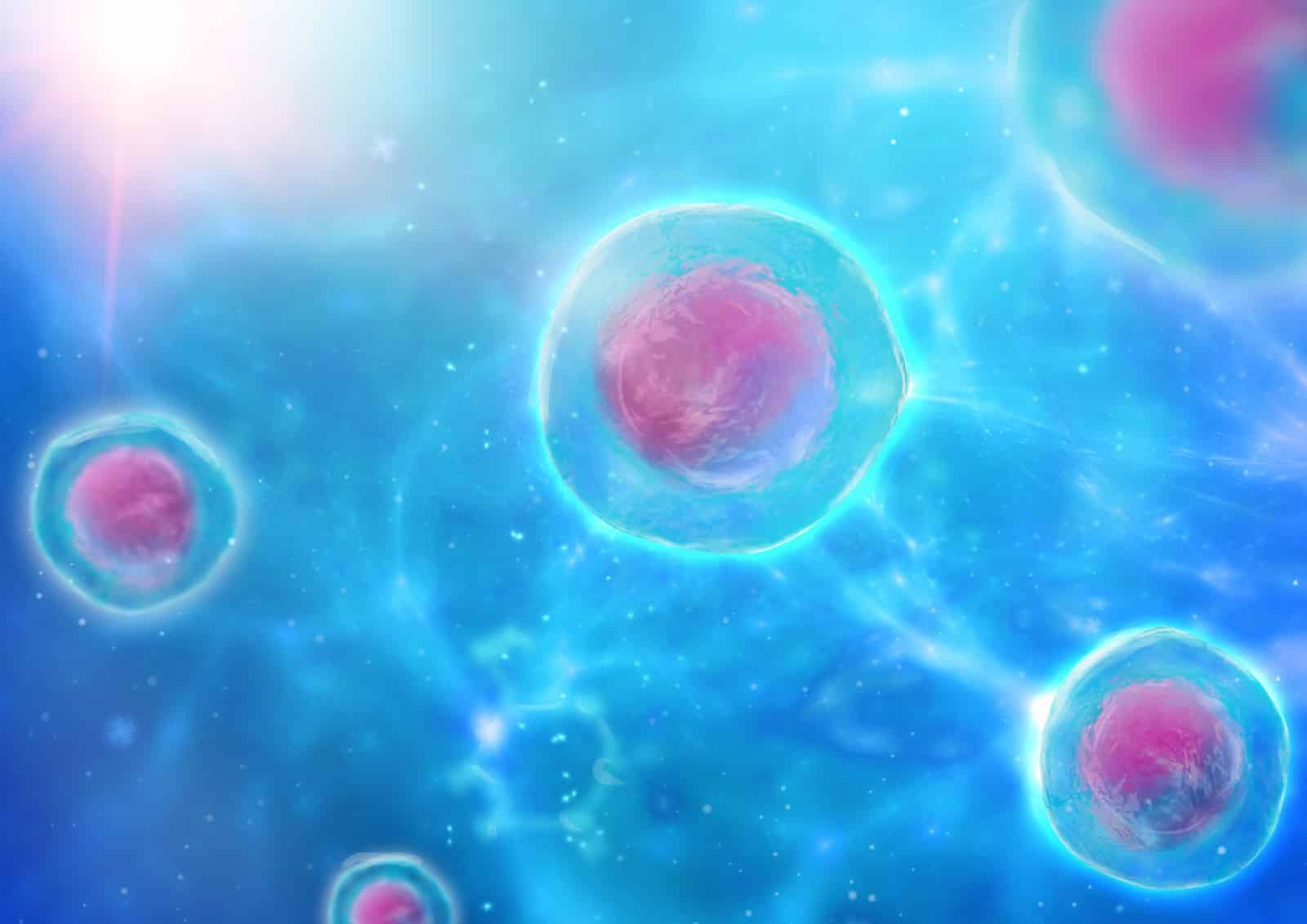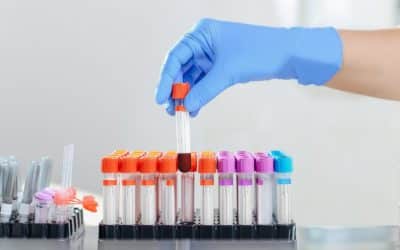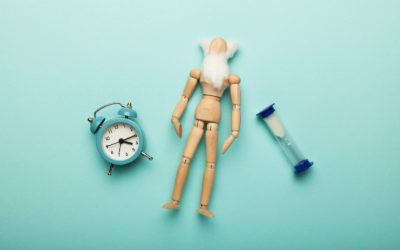
Every second your body produces 2.5 million red blood cells.
Which means that each day your body produces around 200 billion red blood cells. On top of that, your body creates billions of white blood cells and around 400 billion platelets per day (platelets help your blood to clot), which are all important components of your blood.
All these cells are continuously churned out by stem cells that reside in your bone marrow, called “hematopoietic stem cells”. These stem cells produce specific cells like white blood cells and red blood cells.
But hematopoietic stem cells are just one type of stem cells in your body. There are many other types of stem cells producing dozens of different cell types constituting the 40,000 billion cells that make up your body.
Stem cells in your skin replace skin cells every month. Gut stem cells replenish different kinds of gut cells, including the ones that line our gut (such as intestinal epithelial cells). Stem cells in your bone generate bone and cartilage cells, and liver stem cells renew your liver regularly. Stem cells are very powerful, fascinating cells that have the ability to create other cells, this way growing, maintaining and nourishing your body.
In fact, your entire body (all 40,000 billion cells) originated from one super stem cell: the egg cell that got fertilized by a sperm cell. This demonstrates the impressive power of stem cells.
What are stem cells?
Stem cells have two unique and important characteristics:
- They can self-renew, meaning they can create other stem cells
- They can differentiate into different types of cells.
Differentiated cells are non-stem cells. These are the ordinary cells (also called “somatic cells”) that make up most of our tissues, like fat cells, skin cells, bone cells, gut cells, neurons, and so on.
Stem cells are undifferentiated cells that can give rise to differentiated cells. For example, mesenchymal stem cells (MSCs) give rise to differentiated, somatic bone cells, cartilage cells, and fat cells. Liver stem cells create liver cells, stomach stem cells produce various types of stomach cells, haematopoietic stem cells create red blood cells and white blood cells (and platelets), and so on.
Stem cells can divide symmetrically or asymmetrically. When a stem cell divides asymmetrically, it creates a new stem cell and a differentiated, somatic cell (like a skin cell or a liver cell). When a stem cell divides symmetrically, it creates two new stem cells or two differentiated cells.
Different types of stem cells
Stem cells can be classified according to their “potency, which is their ability to create different types of cells.
1. Totipotent stem cells
The most powerful stem cells are “totipotent stem cells”. These stem cells can give rise to all cells that occur in an adult’s body, and also to extra-embryonic tissues. Extra-embryonic tissues are the tissues that surround and support the embryo in the womb, like the placenta and the umbilical cord.
The prime example of such a totipotent stem cell is the fertilized egg cell (zygote), which after fertilization creates both the embryo and the extra-embryonic tissues.
2. Pluripotent stem cells
While totipotent stem cells are the most powerful stem cells, there is another type of stem cells that steals most the limelight: “pluripotent stem cells”. These stem cells are arguably the most interesting type of stem cells for research, medicine and longevity.
Pluripotent stem cells can give rise to all the different cells that occur in an adult’s body, but not to extra-embryonic tissues like the placenta or umbilical cord (like totipotent stem cells can).
So pluripotent stem cells can give rise to fat cells, kidney cells, neurons, skin cells, and so on.
Examples of pluripotent stem cells are (later stage) embryonic stem cells, or “induced pluripotent stem cells” (iPSCs). iPSCs are made from normal cells that are transformed into stem cells – I explain more about iPSCs in another chapter).
The embryonic cells that form an embryo shortly after fertilization are pluripotent stem cells. However, an adult’s body does not contain pluripotent stem cells; these cells are found in a human only when it’s still an embryo. Nonetheless, more simple lifeforms like some worms and sponges have “pluripotent stem cells” as adults, enabling them to regenerate entire parts of their body (R).
3. Multipotent stem cells
Multipotent stem cells give rise to only a few different types of differentiated cells.
Examples of multipotent stem cells are mesenchymal stem cells which create fat cells, bone cells and cartilage cells, but not for example gut cells or kidney cells.
Hematopoietic stem cells continuously produce white and red blood cells. Neuronal stem cells create new types of neurons, while skin stem cells produce various types of skin cells.
Multipotent stem cells are found everywhere in our body as adults, and they replenish, maintain and regenerate our tissues. In general, multipotent stem cells are very rare and difficult to find in our tissues. For example, it’s estimated that less than 1 out of 10,000 cells is a mesenchymal stem cell.
In summary, there are the following main types of stem cells:
- Totipotent stem cells: can create all cells in an adult and extra-embryonic tissues like the placenta and umbilical cord.
Example: fertilized zygote (egg cell).
- Pluripotent stem cells: can create all cells in an adult but not extra-embryonic tissues like placenta or the umbilical cord.
Examples: later-stage embryonic stem cells, induced pluripotent stem cells (iPSCs).
- Multipotent stem cells: can create specific types of differentiated cells.
Examples: hematopoietic stem cells producing red blood cells and white blood cells, liver stem cells creating liver cells, mesenchymal stem cells creating fat cells, bone cells and cartilage cells.
Stem cells and aging
As you might have guessed, stem cells are pivotal for longevity and health, given they renew, replenish and maintain our body day in and day out.
A young person has a lot of stem cells, which are pristine and vigorous, replenishing the tissues at a very high rate, giving young skin its youthful thickness and glow, making muscle cells powerful and difficult to fatigue, allowing the brain and other organs to function at their prime, and enabling tissues to quickly repair and renew themselves.
Unfortunately, during aging, our stem cells start to decline. When we get older, in some tissues, stem cell numbers go down because the stem cells die off. In other tissues, stem cells do not decline (sometimes they even increase in numbers), but they become dysfunctional.This means they generate less differentiated, somatic cells to maintain the tissues.
In fact, some stem cells focus too much on reproducing themselves, creating similar stem cells (called “clones”), instead of creating differentiated cells, which are needed to replenish and maintain our tissues. This is also called “clonal expansion of stem cells”, which can lead to tissue dysfunction (not enough tissue cells are replaced and maintained) and can also lead to cancer (when stem cells start to divide uncontrollably).
Other stem cells become senescent during aging, causing harm to other cells.
What causes stem cells to deteriorate? Mainly the hallmarks of aging we have discussed before. As the decades of our lives pass, our stem cells suffer from epigenetic alterations, mitochondrial dysfunction, protein accumulation, DNA damage, telomere shortening, crosslinking of the extracellular matrix in which they are embedded, and so on.
This leads our stem cells to become increasingly dysfunctional. And when stem cells do not function properly, our tissues are not replenished and maintained: our skin becomes thinner and more frail (because stem cells in our skin are not creating skin cells), our muscles start to dwindle (because reduced muscle stem cell activity to properly maintain muscle cells), our hair becomes gray (because stem cells do not generate melanocytes anymore which give hair its color), wound healing is delayed, our teeth start to fall out (because the dental stem cells in our mouth start to dysfunction or die off), our brain starts to work less well (our brain cells are supported by surrounded dividing cells, like glial cells or the cells that make up the blood vessels, which need stem cells to replenish them), our immune system starts to decline (because our stem cells regenerate less new and functional immune cells), and so on.
Therefore, for optimal longevity, it’s paramount to maintain stem cell function. There are various ways to improve stem cell health, including via nutrition and specific supplements.
Furthermore, scientists all over the world are working on novel stem cell therapies, to improve the health and aging of our stem cells, or to replenish stem cells that died off or don’t function properly anymore.




